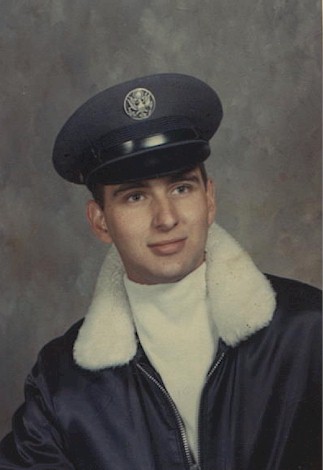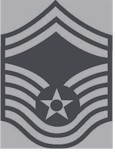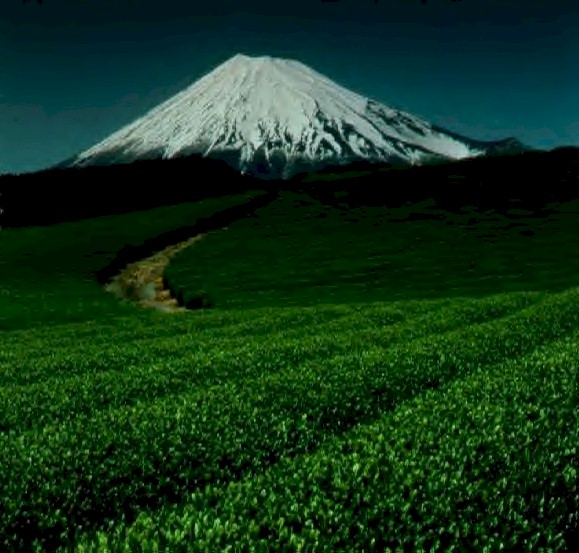



Click here for more history of Sheppard AFB
Uncle John went to tech school to learn Communications. After completion of his training he transferred to his first assignment in Okinawa! at the Naha Air Base.



Click here for more photos of Okinawa

On March 30, 1972, North Vietnam launched a large, three-pronged invasion of South Vietnam, using tanks and mobile armored units. The biggest battle was at An Loc where, by the end of June, the enemy had lost all of its tanks and artillery. When the offensive came to a halt, however, North Vietnam had occupied much of South Vietnam below the DMZ and a strip of land along the South Vietnamese border with Laos and Cambodia. Because of the North Vietnamese offensive, President Nixon on May 8 suspended peace talks and ordered Operation Linebacker, the renewed bombing of North Vietnam and the aerial mining of its harbors and rivers. When North Vietnam appeared ready to talk peace in October, yet another bombing halt was directed. North Vietnam then balked for two months over some of the cease-fire provisions, so President Nixon ordered on December 18, 1972 the heaviest bombing of the war against Hanoi and Haiphong, Operation Linebacker II. For 11 days, the USAF pounded every possible military and transportation target with B-52s and tactical fighters. This brought a North Vietnamese agreement on December 29 to return to the peace table.
For more on the Air Force's role in Vietnam Click here
Click here for more history on Edwards AFB

HISTORY: Misawa Air Base’s heritage dates to 1938 when the Imperial Japanese army built an airstrip here. In late 1941, the Imperial Japanese navy added a communications site to send signals to a combined fleet anchored in nearby Mutsu Bay. During World War II, the Imperial Japanese navy actively used the base for research and development of training and fighter aircraft. The base was heavily bombed from July to August 1945 during the last days of the war. U.S. military members from the 32nd Army Engineering Company occupied the installation starting in September 1945 and began to restore the base. Misawa has maintained an American presence since. In the Korean War, Misawa Air Base supported jet fighter operations that saw action over the Korean peninsula. Air Force fighter operations ceased at Misawa in 1971 and didn’t resume until the arrival of the F-16 Fighting Falcon in 1985.

The senior U.S. military representative here serves as both the Misawa Air Base installation commander and the commander of the host unit here, the 35th Fighter Wing. The 35th FW maintains two combat-ready squadrons of F-16CJ and F-16DJ Block 50 Fighting Falcons. Serving as the "point on the tip of the spear," the wing trains to conduct a variety of missions, including air-to-air combat as well as air-to-ground anti-radar attack roles. Besides its forward presence in the Pacific, the wing is prepared to rapidly deploy its forces anywhere around the world.
Besides the 5,400 U.S. service members assigned here, Misawa is also home to a sizable Japan Air Self Defense Force presence comprised of approximately 3,300 service members. The Northern Air Defense Force headquarters makes up Misawa’s major Japanese military organization. The NADF includes two fighter wings, one aircraft control wing and three defense groups, and its area of operations cover Northern Honshu and the island of Hokkaido. The 3rd Air Wing is another of Misawa’s major JASDF units, and flies the Mitsubishi F-1 and McDonnell Douglas F-4 fighters. Other JASDF units include an airborne early warning squadron operates the E-2C Hawkeye here while the Misawa airlift squadron flies the CH-47 Chinook helicopter. The 3rd AW commander also serves as the JASDF base commander. After his tour ended at Misawa, Uncle John Transferred to Barksdale AFB in Louisiana.

Capt.Charles T.Miller, a veteran of more than 40 years at sea, was on the bridge. He had steered the ship within the boundaries of international waters, but the Cambodians had recently claimed territorial waters 90 miles from the coast of Cambodia. The 40 seamen aboard were taken prisoner.
President Ford ordered the aircraft carrier USS CORAL SEA, the guided missile destroyer USS HENRY B.WILSON and the USS HOLT to the area of seizure. By night, a U.S. reconnaissance aircraft located the MAYAGUEZ at anchor off Pou lo Wal Island. Plans were made to rescue the crew. A battalion landing team of 1100 Marines was ordered flown from bases in Okinawa and the Philippines to assemble at Utapao,Thailand in preparation for the assault.
Click here for more history on the Mayaguez Incident


Click here for more history on the Iranian Hostage Crises
The majority of the B-24 "Liberator" bomber mechanics were Keesler graduates. Many other schools operated at Keesler during the war, including the B-24 copilot and emergency rescue schools. Women began training here in 1943, as did foreign nationals. Students from more than 50 countries have received aviation, personnel and electronics training at Keesler. After the war, Keesler continued to grow, acquiring courses for helicopter mechanics, supply officers and military police. Also added were schools for air chemical, pre-meteorology, cooks and meat-cutters. The Air Force's radar school relocated from Boca Raton, Fla., in 1947. Two years later, Keesler lost its airplane and engine mechanics school when it was moved to Sheppard AFB, TX. That same year, radio operations school moved to Keesler from Scott AFB, Ill. It was at this point Keesler's history became known as the "Electronics Center of the Air Force."
During the 1950s, Keesler underwent a massive rebuilding effort, adding the "Triangle" student area, four academic buildings and a new hospital. The Air Force's urgent demand for radio and electronics technicians forced Keesler's schools to operate six days a week.
Communications and control courses moved from Scott AFB in 1958. Evolving from these courses were the ground and airborne communications electronics maintenance and operator training and air traffic control training courses. Meanwhile, the advent of the Semi Automatic Ground Environment air defense system brought digital computer training to Keesler. After his 6 months at Keesler Uncle John returned to barksdale for another tour of duty.

Following a breakdown in civil order, U.S. forces, in conjunction with contingents of the security forces of several neighboring Caribbean states, invaded the independent state of Grenada on October 25 in response to an appeal from the governor general and to a request for assistance from the Organization of Eastern Caribbean States. The mission was to oust the People's Revolutionary Government, to protect U.S. citizens and restore the lawful government.
Within hours of receiving orders to deploy, Air Force units dispatched to Hunter Army Airfield, Georgia, to pick up U.S. Army Rangers. The rangers had even less time to prepare for the mission as they boarded C-130s and MC-130s for the ride to Grenada. Their first objective was Point Salines airfield, located on the island's most southwestern point. While securing the airfield, The Rangers were to secure the True Blue Campus at Salines, where American medical students were in residence. As quickly as possible, Ranger units were then to take the army camp at Calivigny. > Click here for more history on Operation Urgent Fury
On Oct. 31, 1932, Barksdale Field's first combat organization,the 20th Pursuit Group, arrived from Mather Filed, Ca. At the time the20th had two pursuit squadrons, the 55th and 77th. Five months later, onApril 1, 1933, the group activated a third pursuit squadron, the 79th.The group's mission was aerial training for the purpose of developing proceduresand techniques for hostile aircraft. By the time Barksdale Field held its formal dedication, the 20th Pursuit Group'straining program was in full operation. During the 1930s, Barksdale Field hosted the 3rd Attack Wing andthe 20th Pursuit Group. Flying everything from P-12s and P-26s to A-8 "Shrikes"and Douglas B-18 "Bolos". These units used Barksdale's immense acreageon the East Reservation to hone their gunnery and bombing skills. The 1940s at Barksdale saw the training of bomber crews insteadof the pursuit and fighter crews as in the previous decade. Between May 23 and May 25, 1940, Barksdale Field was host to theArmy's "complete military maneuvers" simulating European combat operations.Some 320 aircraft from throughout the Army Air Corps participated, as General of the Army Dwight D. Eisenhower (then a Colonel) watched.
Among units trained was the famous 17th Bomb Group which wouldbe led by Lt. Col. Jimmy Doolittle (later to become a General) on a raid ofTokyo, Japan. Barksdale also served as a bomber training base for French and Chinese aircrews. Crews received training on Martin B-26 "Marauders" ,Boeing B-17 "Flying Fortresses", and Boeing B-29 "Superfortresses".
Barksdale then became headquarters for the Air Training Commandfrom 1945 to 1949 and began phasing out B-29 crew training. Barksdale Field was named Barksdale Air Force Base in 1948.
During 1949, Barksdale was the home of the first Air Force all-jetstrategic reconnaissance/bomber aircraft, the North American RB-45 "Tornado"and home to the 2nd Air Force headquarters, bringing Barksdale into theStrategic Air Command. The Boeing B-47 "Straojet" and Boeing KC-97 "Stratofreighter"also were assigned here during the mid-50s. In March 1958 the first of the Boeing B-52 "Stratofortresses"and Boeing KC-135 "Stratotankers" were assigned.
The World War I - famous 2nd Bomb Wing transferred to Barksdale on April 1, 1963, from Hunter Field, Ga.
From 1965 and into the 1970s, the 2nd Bomb Wing prepared for the day when they would deploy to Southeast Asia for "Arc Light" and "YoungTiger" missions.
From 1972 through 1973 almost all of the wing's resources weredeployed overseas for operations over Vietnam. All aircraft and crews returned in January and October of 1973.
Headquarters Second Air Force was deactivated in 1975 and the Eighth Air Force Headquarters was installed at Barksdale after being locatedfive years on Guam in charge of strategic operations for the Vietnam War.Uncle John Transferred to Ramstein AFB after his second tour at Barksdale.
Uncle John retired from Active service on 31 August 1990, he returned to the United States and settled back in Norwalk, Connecticut with his wife Madeline and their four children. Death.jpg blindfold.jpg crest.jpg eucom.gif grenada.gif grenjump.jpg mayaguez.jpg naha.jpg